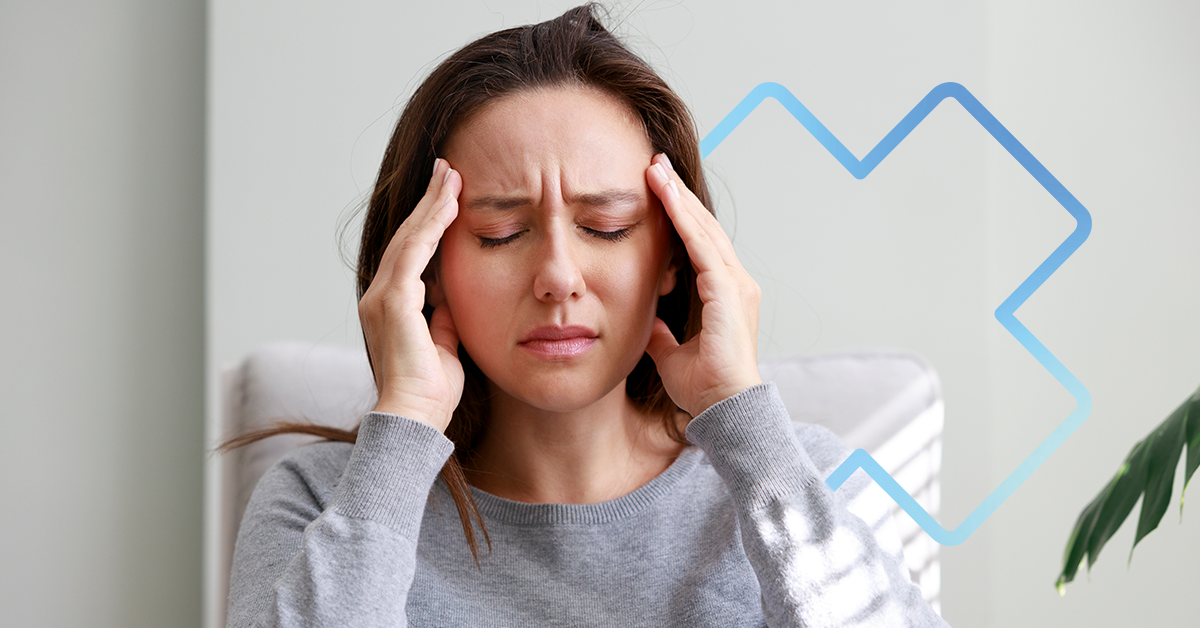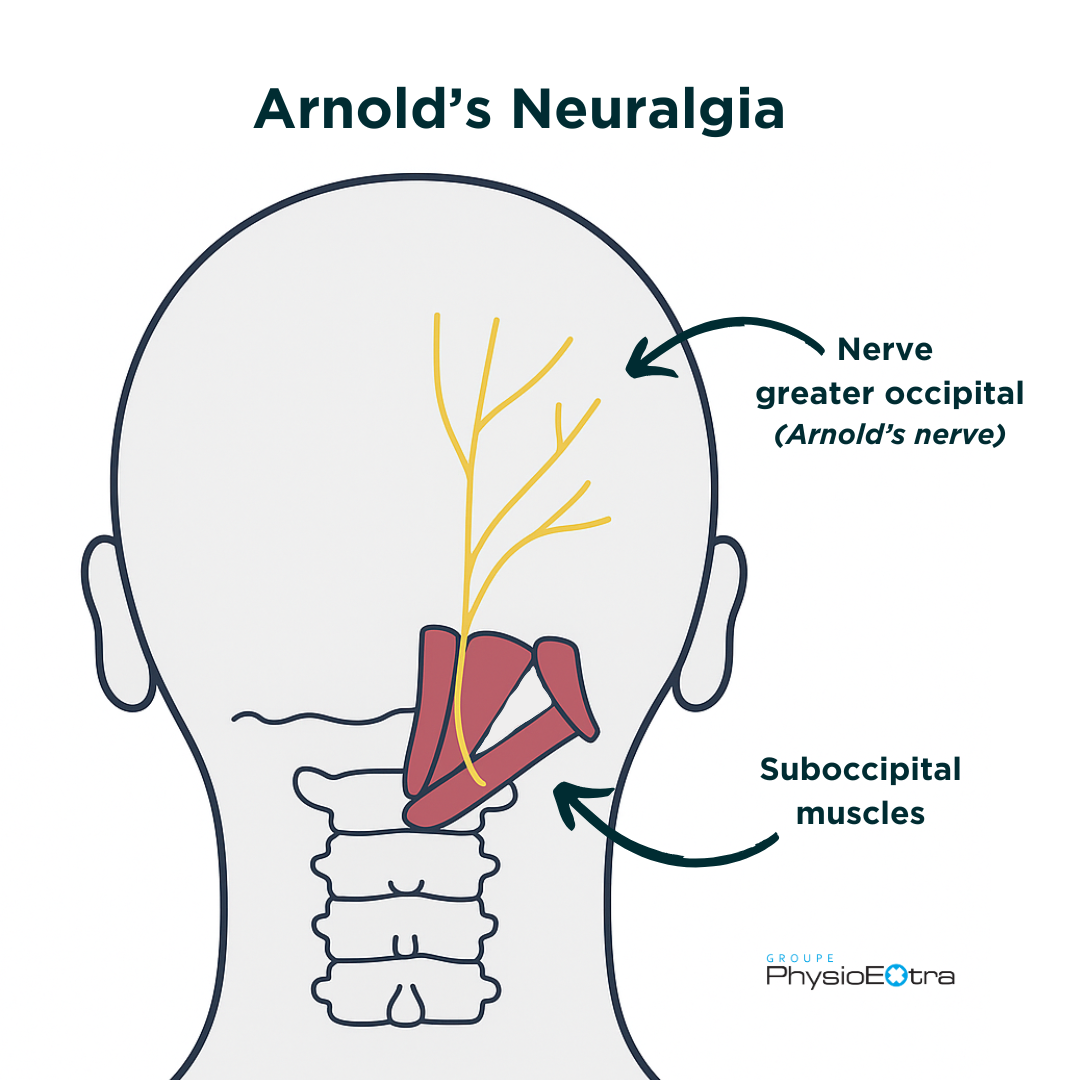Headaches can present as tightness, throbbing, pressure and more, depending on the case. They interfere with daily life, affect concentration, and may be accompanied by neck pain, nausea, or even visual disturbances. Fortunately, several approaches can help reduce their frequency and intensity.

Types of Headaches (Cephalalgia)
Headaches include various types of pain felt in the head or neck. Here are the main types:
- Tension headache: quite common, usually episodic, and described as a tightening or a band-like pressure around the head. It can affect different areas of the skull.
- Cervicogenic headache: linked to a mechanical issue (muscular or articular) in the neck that causes radiating pain to the head.
- Post-traumatic headache: caused by an injury or impact to the head or body, resulting in symptoms that reach the head.
- Migraine: the pain associated with a migraine is typically very intense and can be located near one eye, on one side of the head, or be more diffuse. Often described as a throbbing or pulsating sensation in the skull, it may also be accompanied by light or sound sensitivity, visual auras, nausea, or vomiting. A migraine episode can last from a few hours to several days. There are various types of migraines (vestibular, hormonal, with or without aura, etc.). This condition should be managed in collaboration with a physician.
- Cluster headache: also called Horton’s headache, is quite rare and occurs more frequently in men. It typically causes short but frequent and very intense headaches. The pain usually starts around one eye and radiates through the face. It may be accompanied by tearing and nasal congestion.
- Occipital neuralgia (Arnold's neuralagia): a type of headache caused by irritation of the nerve that runs near the second cervical vertebra, at the base of the skull. Stiffness, tension, or scar tissue in this region can be the cause. The pain is often severe and usually occurs on one side, from the back of the head to the forehead and behind the eye. It may also be accompanied by numbness.

YOU
KNOW?The medical term “cephalalgia” refers to what is commonly called a headache. Both terms mean the same thing.
What can cause headaches?
- Muscle tension due to prolonged poor posture.
- Jaw conditions, such as bruxism (teeth grinding).
- Stress and anxiety.
- Injuries or trauma (blow, whiplash).
- Poor lifestyle habits: sleep, nutrition, hydration.
- Medical conditions (hormonal or neurological disorders).
Frequently asked questions (FAQ)
When should I worry about a headache?
If you experience a very severe headache accompanied by loss of control of your movements, difficulty speaking, or facial drooping, you should go to the emergency room. A very severe headache may be a symptom of a stroke.
You should seek medical help promptly if you have suffered a blow to the head and your headache is accompanied by fever, confusion, loss of appetite, sleep disturbances, or night sweats.
Can migraines be treated with physiotherapy?
Yes. If migraines are linked to tension in the neck or jaw, physiotherapy can help reduce their frequency and intensity.
Should I stop working when I have a headache?
Not necessarily. Taking regular breaks, correcting your posture, and managing stress can help you continue your activities more comfortably.
Can the location of the headache indicate the cause?
Forehead pain, pain behind the eye, pain at the back of the head, and muscle spasms in various areas of the skull can all cause significant discomfort.
While location alone isn’t enough for a clinical diagnosis, it can offer clues about the origin of the headache. Nerves, the jaw, and the sinuses may also be sources of pain.
With a thorough assessment of your condition, a physiotherapist can identify the underlying issue and create a personalized treatment plan. If the cause is not of neuromusculoskeletal origin, they will refer you to the appropriate healthcare professional.
How to relieve your headaches?
Expert tip: improve your posture
- Avoid staying in the same position for too long (maximum 30 minutes).
- Adjust your screens to eye level.
- Breathe using your diaphragm to reduce neck tension.
- Incorporate exercises to improve neck mobility and flexibility.
- Engage in regular physical activity.
- Strengthen your deep neck muscles.
Which professional should you see?
Different healthcare professionals often work together to maximize results.
When in doubt, we recommend starting with a physiotherapist. They can assess your condition and determine which treatments are appropriate for your type of headache.
If necessary, they will refer you to the right professionals to support your recovery.
Why consult a physiotherapist?
After a thorough assessment, a physiotherapist will explain the origin of your headaches and offer you a treatment plan based on your goals. Different options can be considered such as exercises specific to your condition, joint mobilizations, muscle relaxation techniques, etc. Your physiotherapist will also give you advice on how to relieve your headaches.
Why consult an occupational therapist?
The occupational therapist will assess how your headaches affect your daily activities, such as work, household tasks, and leisure.
Their interventions may include strengthening exercises, work task simulations, posture advice, or strategies for managing your daily schedule, which will help you maximize your independence.
Why consult an osteopath?
Through a variety of manual techniques, an osteopath will treat the mobility restrictions that can affect all the structures of your body (bones, muscles, ligaments, viscera, etc.) in connection with your headaches. Improved mobility enables the body to recover better and decreases pain.
Why consult a massage therapist?
A massage therapist will focus mainly on releasing tension in the superficial and deep tissues to help you move more freely and reduce your headaches. Their treatments will also help increase blood circulation to promote better recovery.
Why consult an acupuncturist?
Through various techniques and using therapeutic tools such as needles and suction cups, an acupuncturist will work to reduce the pain, stress, muscle tension and inflammation that may be linked to your headaches.
Why consult a kinesiologist?
After assessing your ability to move and your overall physical condition, a kinesiologist will teach you exercises that are appropriate to help you resume your activities.
Have questions? Call us at 1 855 743-9872 or write to us at informationsweb@physioextra.ca.


